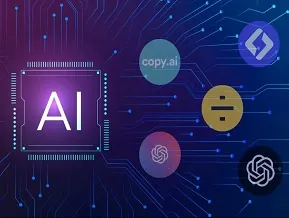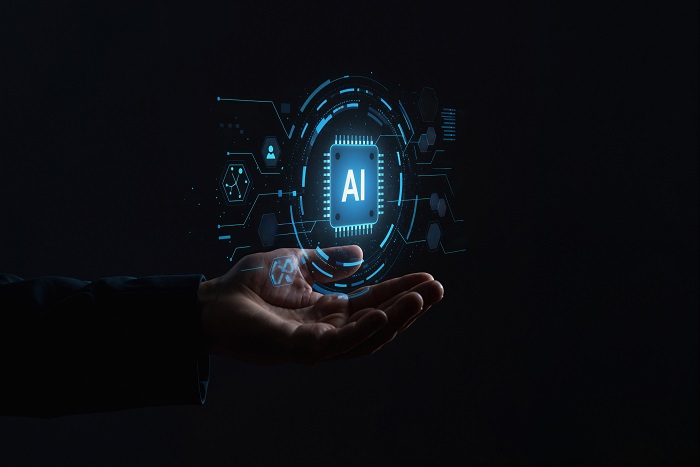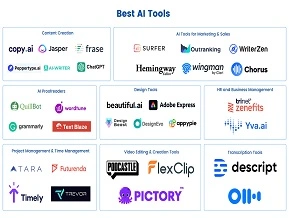Code in AI: Essential Tools and Techniques for Building AI-Driven Applications
What is Code in AI and How Can you Understand the Foundations of AI Programming?
At its core, code in AI refers to the set of instructions written by developers that enable machines to perform intelligent tasks. This code powers everything from simple automation scripts to complex machine learning models and deep neural networks. Unlike traditional software development, coding for AI involves designing algorithms that allow systems to learn from data, adapt to new information, and make decisions with minimal human intervention.
Several programming languages are popular for AI development due to their versatility, extensive libraries, and community support. Python stands out as the leading language in AI because of its simplicity and the vast ecosystem of AI-focused libraries like TensorFlow, PyTorch, and scikit-learn. R is often favoured in statistical analysis and data science, providing powerful tools for data manipulation and visualization. Java, known for its speed and scalability, is also used in AI applications, particularly in large-scale enterprise environments.
Writing efficient and scalable AI code is crucial for building applications that can handle growing amounts of data and complex computations without compromising performance. Efficient code ensures that AI models train faster, use resources optimally, and deliver reliable predictions. Scalability allows AI systems to adapt as data volumes increase and business needs evolve, making them sustainable in the long run.
Moreover, clear and maintainable AI code helps teams collaborate better, debug issues faster, and innovate continuously. As AI projects often involve multiple iterations and experiments, having a strong coding foundation is essential to streamline development and deployment.
In summary, mastering AI programming is about understanding the unique demands of the field and leveraging the right languages and practices to build intelligent, efficient, and scalable applications.
What are the Key Tools and Frameworks for Writing AI Code?
Developers writing AI programs often rely on powerful libraries and frameworks to simplify complex tasks. TensorFlow, developed by Google, is one of the most widely used open-source platforms for machine learning and deep learning. It provides flexible tools to build and train AI models at scale. PyTorch, favoured for its dynamic computation graph and ease of use, has gained immense popularity among researchers and practitioners for prototyping and production. Keras, built on top of TensorFlow, offers a user-friendly API for quickly developing neural networks, making it ideal for beginners and rapid experimentation.
Development Environments and Tools
Efficient coding also depends on the right development environment. Jupyter Notebook is a favourite among AI developers for its interactive interface, which allows users to write code, visualize data, and document their process all in one place. Visual Studio Code (VS Code), a lightweight yet powerful editor, supports numerous extensions for AI programming, debugging, and code management, making it another popular choice.
Version Control and Collaboration
Collaborating on AI projects and managing code versions is essential, especially when teams are involved. Git, a distributed version control system, allows developers to track changes, experiment with new features, and revert to previous versions if needed. Platforms like GitHub provide cloud-based repositories for sharing code, collaborating with other developers, and integrating continuous deployment pipelines.
Mastering these tools and frameworks is crucial for anyone serious about writing efficient and scalable code in AI. They not only accelerate development but also foster collaboration and ensure maintainability, which are vital for successful AI-driven applications.
What is Generative AI Code and How Do Machines Create Content?
Generative AI refers to a class of artificial intelligence models designed to create new content — such as images, text, music, or even videos — that resembles data they were trained on. At its core, generative AI relies on complex coding principles that enable machines to learn patterns from existing data and generate original outputs. This process involves training neural networks to capture underlying data distributions and then sampling from these learned representations to produce novel content.
Popular Generative AI Models
Several advanced models power generative AI today. Generative Adversarial Networks (GANs) involve two neural networks competing against each other — one generates content, while the other evaluates its authenticity. Variational Autoencoders (VAEs) use probabilistic approaches to generate data that smoothly transitions between known examples. Transformers, such as GPT (Generative Pre-trained Transformer), have revolutionized text generation by effectively understanding and predicting sequences of words, enabling coherent and context-aware language outputs.
Real-World Use Cases of Generative AI Code
The ability of generative AI to produce creative and meaningful content has found applications across diverse domains. In art, AI-generated images and designs are helping artists explore new styles and concepts. In text, models like GPT create everything from conversational agents to automated content writing. Music composition benefits from AI-generated melodies and harmonies, opening new avenues for composers. Additionally, generative AI powers innovations in video game development, personalized marketing, and even drug discovery.
Mastering generative ai code opens exciting opportunities to build cutting-edge applications that push the boundaries of creativity and automation.
What are the Techniques for Building Robust AI-Driven Applications?
A strong AI application starts with high-quality data. Data preprocessing involves transforming raw data into a clean, usable format. This includes handling missing values, removing duplicates, normalizing data scales, and encoding categorical variables. Effective cleaning ensures the AI model learns from accurate and relevant information, reducing errors and biases during training.
Model Training, Validation, and Tuning Best Practices
Once the data is ready, training the AI model is the next critical step. This involves feeding data into algorithms and allowing the model to learn patterns. Validation techniques, such as cross-validation, help assess how well the model generalizes to unseen data. Hyperparameter tuning optimizes the model’s performance by adjusting settings like learning rate and network architecture. Careful tuning prevents overfitting and improves accuracy.
Deployment Strategies and Integration with Applications
After building a robust model, deploying it into real-world applications is essential. Deployment strategies include containerization with Docker, using cloud platforms like AWS or Azure, and implementing APIs for easy integration. Seamless integration ensures the AI-driven application works efficiently with existing systems, delivering value to users in real time.
Mastering these techniques is key to developing scalable and reliable AI solutions. Writing efficient and maintainable solutions underpins every stage—from data preparation to deployment—ensuring your applications perform well and adapt to evolving needs. Continuous monitoring and updating of your AI models post-deployment are equally crucial. By tracking performance metrics and user feedback, you can identify when models need retraining or adjustment. This ongoing process helps maintain accuracy, relevance, and trustworthiness, ultimately leading to robust, long-lasting AI-driven applications that truly serve business and user goals.
What are the Challenges and Best Practices When Writing AI Code?
Writing AI code comes with unique challenges. One common pitfall is overfitting, where the model learns the training data too well but fails to generalize to new inputs. This often happens due to inadequate data or poor validation practices. Another issue is inefficient use of computational resources, leading to slow training times and wasted costs. To avoid these, ensure thorough data preprocessing, use appropriate model architectures, and implement robust testing.
Ensuring Code Efficiency and Maintainability
AI projects often evolve rapidly, making clean and maintainable code essential. Best practices include modular programming, using well-documented functions, and adhering to coding standards. Leveraging frameworks like TensorFlow or PyTorch can simplify development but requires understanding their best use cases. Efficient code also involves optimizing algorithms to reduce memory consumption and execution time, which is vital for scaling AI applications.
Ethical Considerations in AI Programming
Ethics play a critical role when writing AI code. Developers must be vigilant about biases in training data that can lead to unfair or harmful outcomes. Transparency in model decisions and ensuring user privacy are fundamental. Responsible AI programming involves continuous monitoring and updating of models to mitigate risks and comply with legal frameworks.
Mastering these challenges and following best practices is especially important when working with generative ai code, where creating authentic, unbiased content demands high levels of precision, transparency, and ethical responsibility.
What are the Best Learning Resources to Master Code in AI and Generative AI Code?
LAI offers a wide range of expert-led courses designed to build your proficiency in AI programming. Whether you’re a beginner or looking to deepen your skills, LAI’s curriculum covers fundamental programming languages like Python and advanced AI frameworks such as TensorFlow and PyTorch. The platform’s hands-on tutorials focus on real-world projects, giving you practical experience writing efficient and scalable AI code.
Open-Source Projects and Communities to Join
Getting involved in open-source AI projects is one of the best ways to apply what you’ve learned and connect with other developers. Platforms like GitHub host numerous repositories focused on AI and generative models where you can contribute, review code, and collaborate. Communities such as AI Stack Exchange, Reddit’s Machine Learning group, and specialized forums provide ongoing support, knowledge sharing, and the latest industry insights.
Continuous Learning Strategies for AI Developers
The AI field evolves rapidly, making continuous learning essential. Set a routine for staying updated with research papers, blogs, and webinars. Participate in AI hackathons and coding challenges to sharpen your skills and discover new techniques. Experiment regularly with your own projects to deepen your understanding and creativity.
Mastering both code in AI and generative ai code requires dedication, practice, and the right resources. By leveraging LAI’s courses alongside active participation in open-source communities and ongoing learning, you’ll build the expertise needed to develop innovative, cutting-edge AI applications.
How Do you Get Started Writing your First AI Code?
Before you start coding, it’s essential to prepare your workspace. Install popular tools like Python, which is the most widely used language in AI programming. Use integrated development environments (IDEs) such as Jupyter Notebook or VS Code to write and test your code interactively. Also, set up key AI libraries like TensorFlow or PyTorch to leverage powerful pre-built functions and models.
Writing a Simple AI Program or Generative AI Script
Begin with a straightforward project, such as building a basic machine learning model to classify data or writing a simple generative AI script that creates text or images. For example, you can create a text generator using a pretrained language model with just a few lines of code. This hands-on experience helps you understand core AI concepts practically.
Testing and Iterating Your Code
Testing is crucial in AI development. Run your program with sample datasets, analyse the results, and adjust parameters or improve your code based on performance. Iteration lets you refine your models, fix bugs, and enhance accuracy, preparing you for more complex projects.
Tips for Beginners to Build Confidence and Improve Skills
Start small and gradually increase complexity. Follow online tutorials and courses from LAI to get guided learning. Join coding communities and forums to ask questions and learn from others. Practice consistently, and don’t hesitate to experiment—failure is part of the learning process!
Keep a learning journal to track your progress and note challenges. Over time, you’ll see how your skills improve and understand where to focus next. Remember, AI development is a marathon, not a sprint, so stay patient and persistent. Celebrate small wins and always stay curious—this mind-set will drive your growth in AI coding.
Conclusion
The future of code in AI is rapidly evolving with emerging tools and techniques that make AI development more accessible and powerful. Innovations in automation, low-code platforms, and improved AI frameworks are transforming how developers build intelligent applications. At the same time, generative ai code is revolutionizing industries—from creative arts to healthcare—by enabling machines to create original content and solve complex problems. For aspiring AI developers, there’s no better time to start learning and building. Embracing these advancements today will position you at the forefront of tomorrow’s AI-driven innovations.












